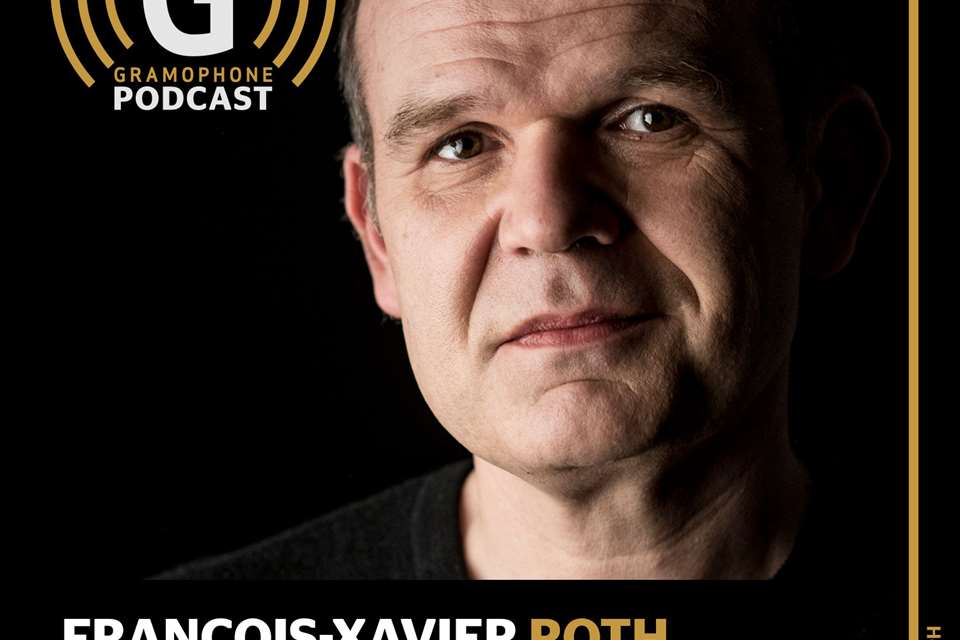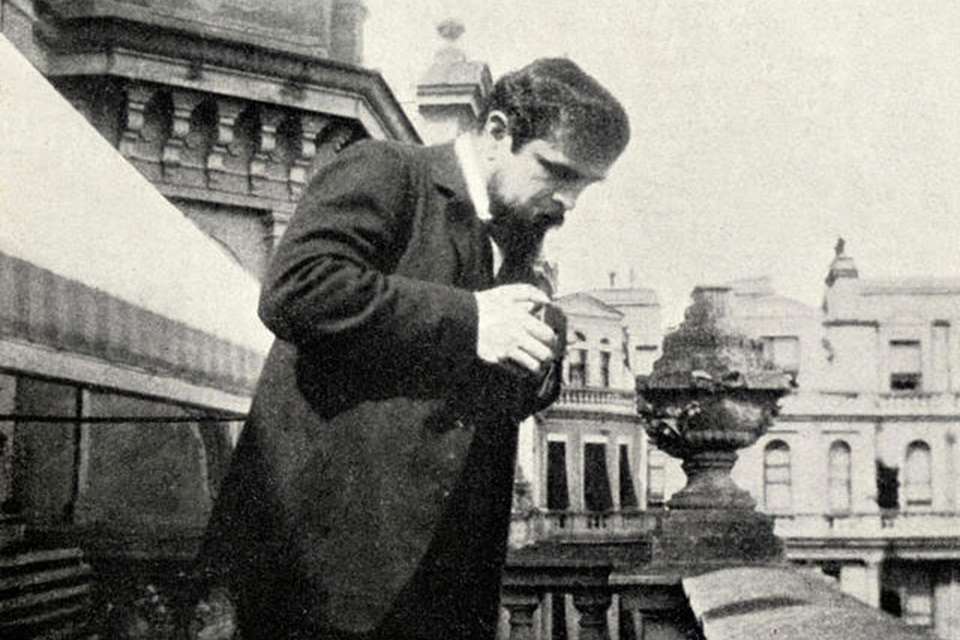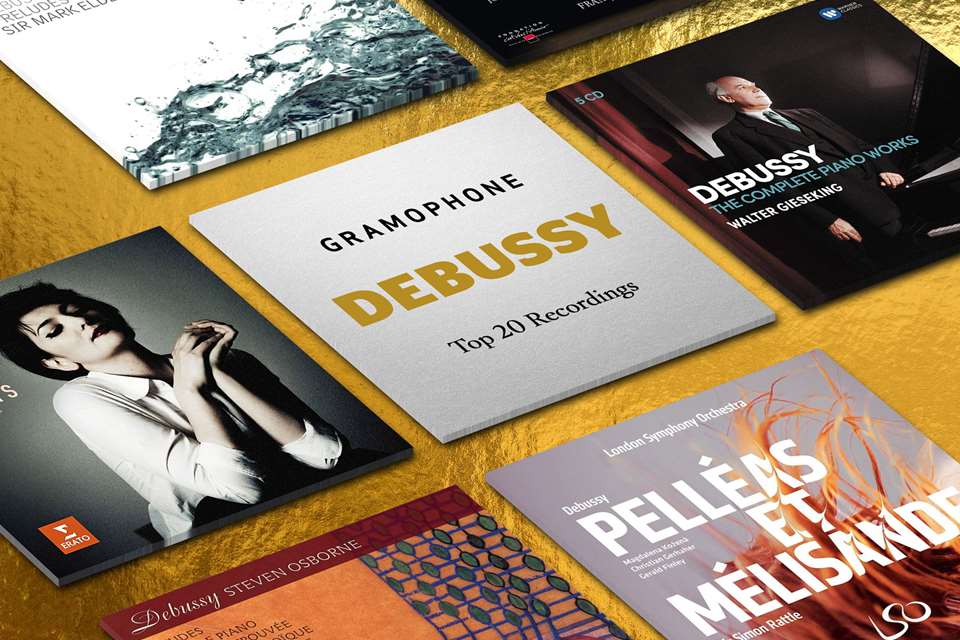Debussy’s Jeux: a complete guide to the best recordings
Richard Whitehouse
Friday, October 21, 2022
Debussy’s elusive ‘poème dansé’ stands at the intersection between late Romanticism and modernism. Richard Whitehouse follows its recorded progress over the past 75 years
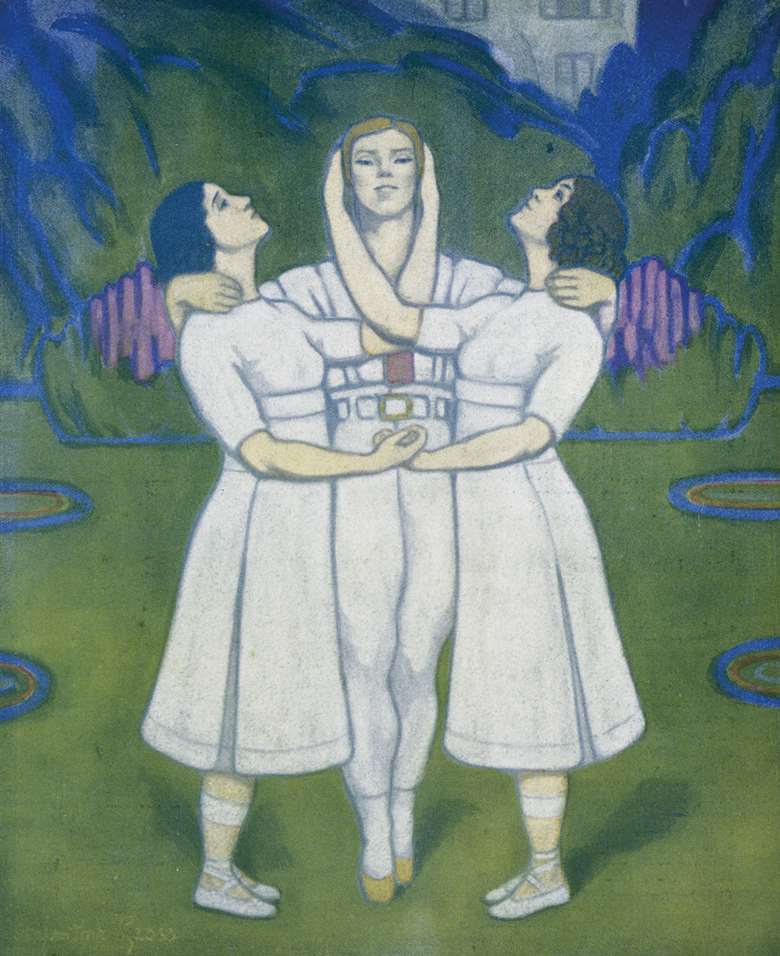
May 1913 saw the premiere in Paris of two ballets. Stravinsky’s The Rite of Spring on May 29 caused a sensation whose consequences were immediate and lasting, whereas Debussy’s Jeux a fortnight before elicited something closer to bemusement, leaving the music in relative limbo over the next three decades. Yet it is now evident that the latter score has been no less influential on the course of Western music and, while its public profile will never be comparable to The Rite, its critical standing might not have been higher than today.
Overview
Debussy evidently realised Jeux’s importance as it was the only one of his late stage works he finished in its entirety. Not that he was taken with the commission as proposed by Sergey Diaghilev in May 1912, but later modification and a doubling of the commission fee allayed his doubts, and he drafted the piece from July to September. His envisaging an orchestration ‘without feet’, as he memorably described his task, forced Nijinsky to devise his choreography from a two-piano score that conveys the music’s ergonomics but precious little of its essence.
See also:
It was unsurprising when the first performance on May 15 at Théâtre des Champs-Élysées passed with little enthusiasm, Debussy complaining that Nijinsky had ‘trampled his rhythms underfoot like weeds’. That rehearsal time had been curtailed by preparation for the premiere of The Rite was a harbinger of the unequal relationship these works thereafter enjoyed, such that, while both became known primarily in the concert hall rather than the theatre, Stravinsky’s score had established itself in little more than a decade, whereas Jeux took over a generation.
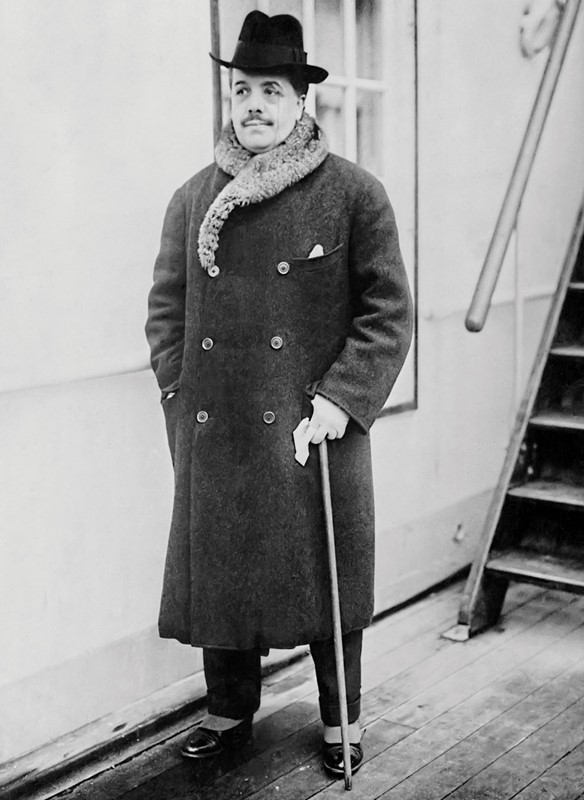
Sergey Diaghilev, who commissioned the work (photo: Uber Bilder/Alamy Stock Photo)
As conceived by Nijinsky, its scenario was described at the premiere on the following lines: ‘A garden at dusk. A tennis ball has been lost, a boy and two girls search for it. The artificial light of large electric lamps sheds fantastic rays about them and suggests the idea of childish games – they play hide and seek, they try to catch one another, they quarrel, they sulk without cause, they embrace. The spell is broken by another tennis ball thrown mischievously by an unknown hand. Surprised and alarmed, they disperse into the nocturnal depths of the garden.’
A further description strikes more of a resonance: the night is warm, and the sky bathed in pale light. The essence of this ‘poème dansé’ is most fully conveyed through an elusiveness whose motifs are pithy in the extreme, and whose rhythmic suppleness is achieved by more than 60 tempo changes specified across its course. Together with a ‘developing variation’ no less systematic than that of Schoenberg’s serial method, this results in music always in transition and far removed from fleetingly amorous encounters over tennis.
The earliest recordings
Had he read WR Anderson’s Gramophone review, Victor de Sabata might have wondered about this first recording of Jeux – Debussy having ‘rather over-pressed his powers, and coarsened his style … There is nothing much to get hold of’. This of a reading that ensures every phrase takes its place in a fluid if never amorphous form packed with expressive potency, the final minutes riveting in their dreamlike intensity. The Santa Cecilia musicians (then the ‘Orchestra of The Augusteo’) rise to the task and WRA’s dismissal had little impact on its long-term reception.
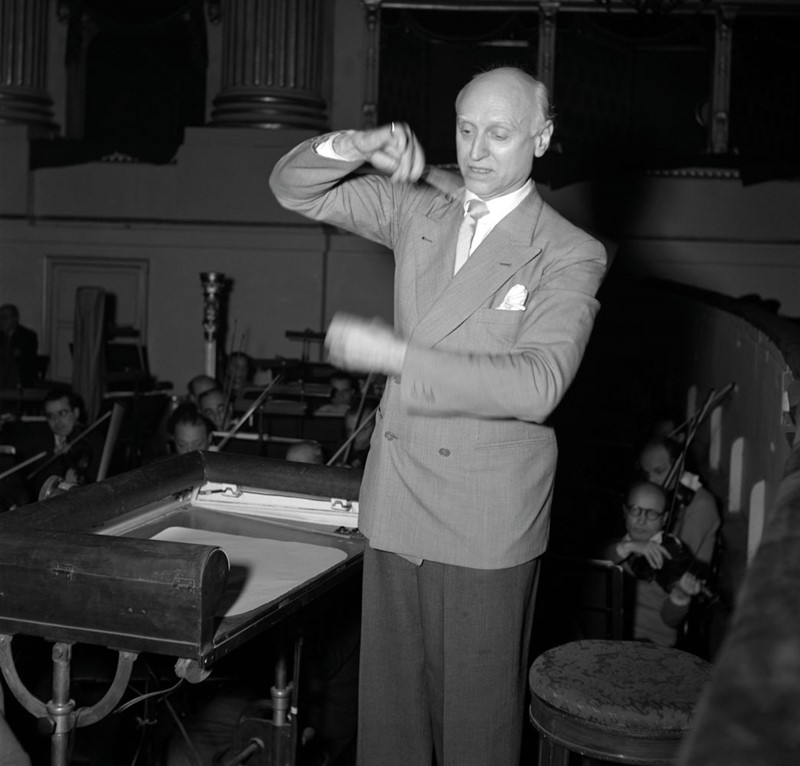
Victor de Sabata, who opened Jeux’s discography in 1947, available on Testament (photo: Graziano Arici/Archivio Arici/Bridgeman Images)
Might Sergiu Celibidache’s live account have elicited a more favourable response had it not languished long in the archives? Reckless and untidy next to de Sabata, with little thought of overall cohesion, there is a spontaneity and impulsiveness its conductor might have struggled to recapture in Stuttgart and surely not in Munich. Amazingly, this is the Berlin Philharmonic’s only response to a piece not attempted by Karajan, Abbado or Rattle. Might Kirill Petrenko oblige?
Jeux established itself recording-wise with Ernest Ansermet’s account. Malcolm Macdonald gave it the benefit of whatever doubts he doubtless harboured, as may have been occasioned by slightly grainy mono sound – audibly sharpened in stereo later that decade – but equally by Ansermet’s stop-go approach, which distorts expressive contours and makes the going tough for a Suisse Romande still feeling its way in this music. Much reissued, it is the recording through which a generation encountered the piece and its historical importance, at least, is undeniable.
The recorded legacy of Hans Rosbaud has been transformed since live performances began to emerge. An early instance was Jeux with the Cologne Radio Symphony – typical for its technical precision or emotional restraint (but never reserve) at a swift though never headlong tempo. For Rosbaud, often unacknowledged as among the most wide-ranging conductors of his generation, the music emerges out of the notes such that sound always equates with sense.
Pierre Monteux having launched Jeux upon an uncomprehending public, one regrets he never recorded it commercially. His 1951 performance (West Hill Radio Archives, A/09) finds the Boston Symphony sounding nonplussed at so swift an overall tempo, then his 1955 one has the French National Orchestra responding to his more flexible approach with characterful while not always precise playing and a palpable sense of atmosphere rendering the music in evocative if not necessarily balletic terms. Perhaps memories of Nijinsky’s choreography could not entirely be banished?
Recorded in the studio just two years later with (ostensibly) the same orchestra, Désiré‑Émile Inghelbrecht’s Jeux feels the most inherently French-sounding in timbral shading and a ‘live for the moment’ conception arguably closer to its spirit than might have been acknowledged at the time. Less compulsive as music-making than de Sabata, its stance on the cusp between illustrative and analytical interpretation reinforces its significance as a historical document in aesthetic as well as execution. Superb remastering two decades ago is a further enhancement.
Charles Munch never took Jeux into the studio but a live reading with the Boston Symphony Orchestra reveals a textural translucency and elastic sense of phrasing that keep the music unfolding ‘in real time’. Balance may favour woodwind and especially brass, yet this only serves to point up an overriding fantasy and even playfulness. The BSO enter wholly into its spirit for the work’s latter half and summon a palpable emotional impetus that only compels admiration.
Jeux is not a work associated with Leonard Bernstein, as it proves in an account from near the start of his tenure with the New York Philharmonic. Not that there is a lack of flair, but too vivid playing by brass and woodwind with a spotlit balance exacerbated by high-level remastering results in a decadence at odds with this music. A pity Bernstein never revisited this piece, which might at least have afforded greater continuity than seemed possible here.
Manuel Rosenthal’s 1958 Jeux (Accord, 7/05) is nothing if not theatrical but the hard-pressed players of the Paris Opéra are not flattered by sound that verges on the crude and even vulgar. Only Hermann Scherchen could have brought Jeux this close to German Expressionism, and if the North-West German Philharmonic sounds muffled, his 1960 account (Tahra) still engrosses.
Later analogue recordings
André Cluytens’s version fell through the critical cracks, not helped by Edward Greenfield’s cursory dismissal of it as ‘less inspired’ than its Images coupling. The Paris Conservatoire players occasionally smudge detail and the sound highlights solo instruments unnecessarily, but Cluytens’s concern over detail as for the ‘bigger picture’ is always absorbing. With hindsight, the final call for Jeux as a quirky offshoot of late Romanticism than a harbinger of modernism.
The tide in favour of Jeux as a modernist tenet had certainly turned when Pierre Boulez made his first studio recording. Earlier
live performances have emerged to underline how this most analytical composer-conductor honed his reading to a peak of objectivity. Felix Aprahamian may have regretted the lack of French timbre, but literal authenticity never was a Boulez trait. If his remake achieved cohesion yet more completely, this earlier version retains its potency.
Jean Martinon’s reading originally came as part of an almost complete overview of Debussy’s orchestral music, the consistency of approach evident here in Jeux with its engaging sense of fantasy and an irony-tinged humour. If not the most virtuoso ensemble, the latter-day French National Orchestra is audibly behind Martinon’s vision of a piece poised unerringly between epochs in French as of Western culture. Much reissued and never unavailable, it overcomes passing technical inconsistency to remain as appealing and as charismatic a reading as most.
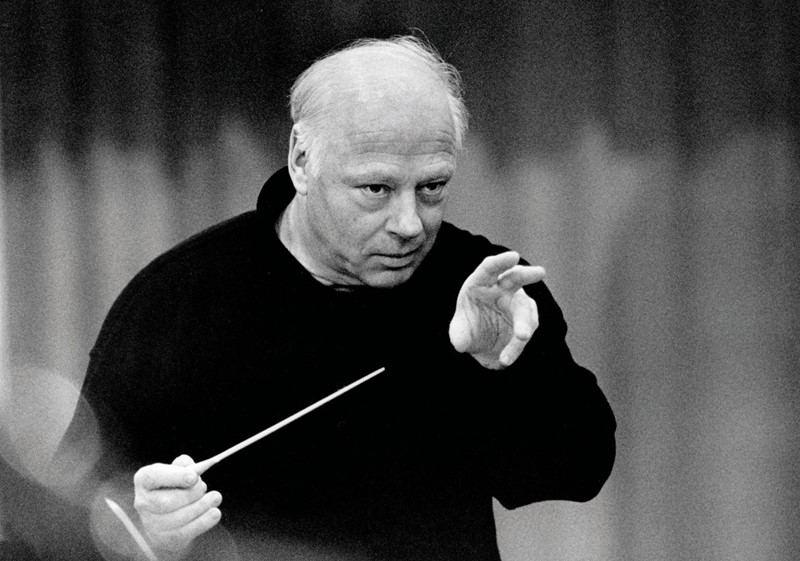
Bernard Haitink, whose 1979 recording of Jeux remains a highlight of his recorded legacy (photo: Decca)
Over four decades on and Bernard Haitink retains a place at the top of the Jeux discography, partly owing to the all-round excellence of the Concertgebouw’s response and partly to the clarity of the orchestra’s acoustic, but mainly for the sheer understated rightness of his interpretation. This brings the evocative and abstract facets of Debussy’s score into uncanny accord, the music evolving as if without conscious intervention by the conductor. In short, it gets to the heart of this piece to a degree matched by few exponents and surpassed by none.
Both Louis de Froment’s lively 1974 take with the Luxembourg Radio Symphony (Andante) and Milan Horvat’s characterful 1975 reading with the Austrian Radio Symphony (One Media) testify to able conductors who now seem unlikely to enjoy much of a posthumous reputation.
The digital era
Serge Baudo’s earlier recording of Jeux elicited an eloquent while reserved response from the Czech Philharmonic towards the end of its golden era (Supraphon, 10/68), while that featuring the London Philharmonic reveals a luminous eloquence that is never easily come by. This latter account is particularly worth searching out through streaming – not least when its underrated conductor, whose UK appearances were rare and his discography far too limited, nears his 95th birthday.
Simon Rattle made only one release of Debussy over his tenure with the City of Birmingham Symphony Orchestra but it remains among the most successful of that partnership. Not quite the equal of his Images, this account of Jeux steers a secure if relatively leisurely course that only loses focus in those interludes either side of its central episode. There is just a hint of the self-consciousness that latterly affected Rattle’s music-making, but this performance overall commands attention.
The Montreal Symphony was technically the finest French orchestra during Charles Dutoit’s tenure, and it would be hard to find a reading of Jeux that is more elegantly phrased or with greater tonal finesse. Yet the conductor conveys precious little sense of what this music might be about, thereby making for a sonically alluring traversal that bewitches but never involves on any deeper level. Hardly orchestral tissue without music, but without emotion – perhaps?
Yan Pascal Tortelier may never have brought the Ulster Orchestra to a comparable technical level but his approach uncovers greater expressive variety, with a degree of pathos that feels no less affecting for avoiding expressive extremes. Tortelier is also conspicuously successful in pointing up those fleeting motivic connections that give this piece a formal focus, not least during the cumulative penultimate stage, which generates no mean physicality over its course.
Michael Tilson Thomas’s Jeux with the London Symphony Orchestra attracted relatively little attention, which is less than its incisiveness and animation deserved. Barely 30 seconds slower, his San Francisco remake (11/16) is less engaged with what this piece ‘is’ as to how it should sound. MTT conjures playing of exceptional finesse, heard to advantage in the SFS acoustic, but only a qualified sense of those ominous and threatening moods in which this music abounds.
Boulez’s studio remake with the Cleveland Orchestra fairly typifies his change of emphasis: formerly a composer whose analytical zeal recreated the music in his own image; latterly an ‘interpreter’ intent on conveying a rational perspective in an era where progress or evolution could seem illusory. No other work embodies such factors more fully than Jeux, which gets a reading where deftness of touch is allied to emotional acuity amply sustained over this swift traversal. The essence of what is being conveyed leaves no doubt as to those issues at stake.
Neither of Lorin Maazel’s recordings conveys anything so substantial. That for Decca (3/80) finds an earlier Cleveland incarnation disengaged, whatever the excellence of its playing. His RCA remake is the only recorded opportunity to hear the Vienna Philharmonic in this score and, if there can be no mistaking its attentiveness of response, Maazel’s calculation allows for no spontaneity – without which Jeux is a judicious scale-model and ‘live’ in appearance only.
Hans Zender’s 1984 Jeux with the Saarbrücken Radio Symphony (CPO, 12/97) is tangibly on the Rosbaud-Boulez axis, its clarity making the most of a less than atmospheric acoustic. Ernest Bour with the South-West German Radio Symphony (Astrée, 10/97) has abundant atmosphere with felicitous playing but lacks emotional impetus in the final stages. Of two recordings on Erato (Warner), that from 1985 by James Conlon and the Rotterdam Philharmonic has an insouciance evoking Dukas, while that from 1989 by Armin Jordan finds the Suisse Romande still in its post-Ansermet longueur. Superbly realised, Michael Gielen’s 1991 version with the South-West German Radio Symphony (Intercord) lacks emotional heft. Jukka-Pekka Saraste with the Finnish Radio Symphony (Erato, 4/94) is the nearest that Jeux has ever come to being boring.
Jeux in the 21st century
His thoughtful if mannered Proms reading with the BBC National Orchestra of Wales (11/99) suggested that Mark Elder had a Jeux of worth, as so it proves with the Hallé. Still prone to linger over detail or place undue emphasis on phrases, he draws a cumulative inevitability that only falters at the main climax. This, together with the matter-of-fact opening and close, prevents a recommendation with the finest, but its distinctiveness warrants repeated listening.
If the recording by Stéphane Denève is less arresting, its refinement as an interpretation or through the the Royal Scottish National Orchestra’s fastidious response compels respect. An added plus-point is its division into 10 tracks, so as to enable perusal of a scenario included in the booklet. Denève’s teasing out of detail also suggests a keenness to evoke this illustrative aspect – in which case, the climactic ‘triple kiss’ goes for little. A pity, as so lucid a reading has much to commend it.
Lan Shui gives an account that, less musically eventful than others, has a formal seamlessness and expressive focus to make for an absorbing listen. Characterisation occasionally verges on the enervated, which might be felt apposite to the nature of Jeux as poised between competing claims of (post-)Impressionism and modernism. Shui’s restraint and lucidity leave this matter open but his control over all aspects of the piece implies no less close an identity for all that.
François‑Xavier Roth has extended his take on authenticity to a range of French music, Jeux no exception as regards the woodwind and brass heard. Timbrally and texturally an absorbing listen, whether the circumscribed dynamic range is ‘authentic’ is open to question. The bonus DVD includes a live performance whose greater spontaneity and edginess, with the attraction of seeing this orchestra ‘in situ’, goes further in vindicating Roth’s often provocative response.
Jonathan Nott’s version with the Suisse Romande came 65 years after Ansermet’s. If this were a case of playing and recording it would already be preferable, but the reading also testifies to Nott’s searching out the music’s emotional disjuncture without undermining formal cohesion. Sureness of touch is abetted by an acuity of insight that plays down neither its evocativeness nor its abstraction, and so renders the score whole. Whether balletic trailblazer or modernist paradigm becomes irrelevant: Jeux is reaffirmed as a masterpiece of Western musical culture.
Jun Märkl’s 2007 Jeux (Naxos) is among the more spacious accounts, with due savouring of detail yet little sense of where the music might be headed. His Lyon National forces evince limpid woodwind solos and piquant brass-writing but restricted sound overrides subtlety of texture or dynamic. A 2006 version by the South-West German Radio Symphony with Sylvain Cambreling at the helm (Hänssler Classic) has balletic grace but too many instances of expressive inconsequentiality for repeated hearing. That by Valery Gergiev and the London Symphony Orchestra (LSO Live, 7/11) comes over as an amalgam of rehearsal and live takes in its formal discontinuity and inconsistencies of balance. Alan Gilbert’s 2010 account on the New York Philharmonic’s own label has an appealing capriciousness even if it marginally fails to take flight, for all that the orchestra most often gives of its collective finest.
Conclusion
Although Jeux is never likely to enjoy anything approaching popular acclaim, the recorded field is extensive enough to allow for various interpretative options, among which Bernard Haitink’s account reigns supreme. With the Concertgebouw sounding the classiest of ‘French’ orchestras, and with Haitink securing ideal equilibrium between incident and continuity, this comes closest to capturing the elusive, ominous and ambivalent atmosphere of music whose revolutionary nature Debussy doubtless realised and about whose fate he most surely cared.
This article originally appeared in the October 2022 issue of Gramophone magazine. Never miss an issue of the world's leading classical music magazine – subscribe to Gramophone today




